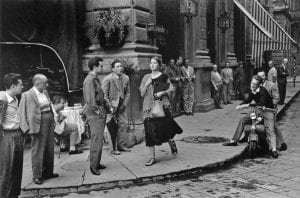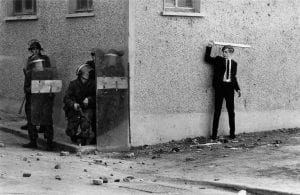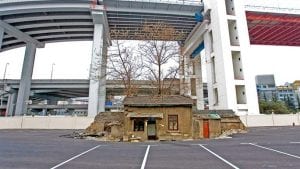 Robert De Niro in Once Upon a Time in America (1984)
Robert De Niro in Once Upon a Time in America (1984)
From Sergio Leone to Dennis Potter – sound, music and flashback
My last post about 1985’s Dreamchild has got me thinking about scenes of remembering from cinema and television, and particularly how sound can be employed to signal a temporal shift in narrative. In the Dreamchild scene featured in my post the incessant ringing of a telephone seems to open up a rabbit hole both into traumatic past events – in this case the spectre of Alice’s possible abuser – and a fantasy world borne of Lewis Carroll’s imagination. By way of a reminder, here is that scene again: Continue reading


 Norman Rockwell, Breaking Home Ties, 1954
Norman Rockwell, Breaking Home Ties, 1954 American Girl in Italy by Ruth Orkin, 1951
American Girl in Italy by Ruth Orkin, 1951 Don McCullin, Northern Ireland, The Bogside, Londonderry, 1971
Don McCullin, Northern Ireland, The Bogside, Londonderry, 1971 Walter Becker and Donald Fagen of Steely Dan
Walter Becker and Donald Fagen of Steely Dan
